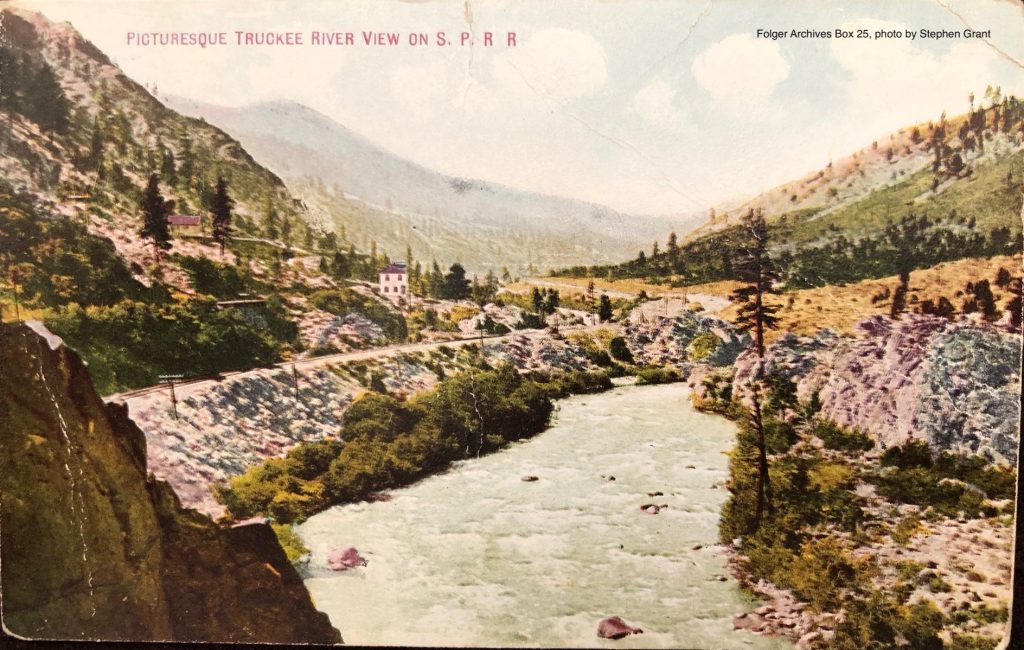
Fig. 1 Picturesque Truckee River View on S.P.R.R.
We pick up from the series of picture postcards Henry Folger sent to his wife Emily in Brooklyn during his Standard Oil Company business trips to western states in 1910. The Truckee River flows northeasterly from California to Nevada. The sole outlet of Lake Tahoe, the river is an important source of irrigation for the region. The New York-based businessmen must have enjoyed the variety of scenery in the west. I wonder what Folger’s colleagues wrote home to their family and friends.
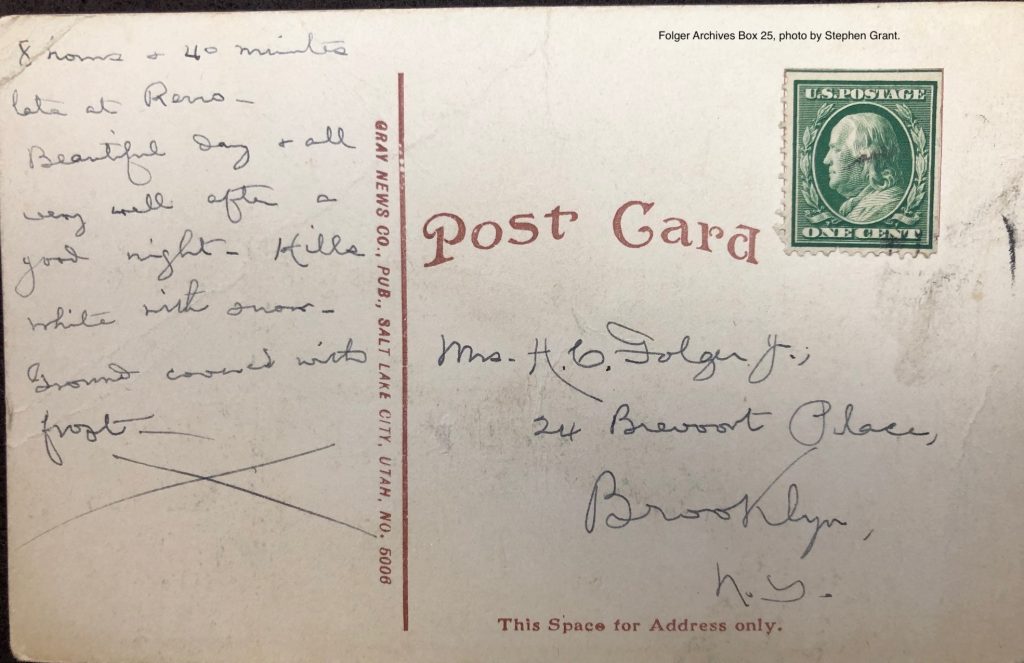
Fig. 2. Message and Address side of same postcard.
This is the second card we’ve seen published for Gray News Co. in Salt Lake City, Utah. No informative postmark tells us place, date, and hour of mailing. Only a halfhearted blotch. Notice the green Franklin one-cent stamp is a corner stamp on the sheet. Only two sides have perforations. And my oh my, after 7 postcards sent Emily with a total of 74 words in all, is Henry loquacious! “8 hours and 40 minutes late at Reno. Beautiful day and all very well after a good night. Hills white with snow. Ground covered with frost.” Twenty-six words and don’t let anybody else write on this card. Had Emily written back and commented, “Henry, you might have written a bit more”? Henry is concerned about respecting the schedule and sleeping well. This time he goes as far as to describe the scenery.
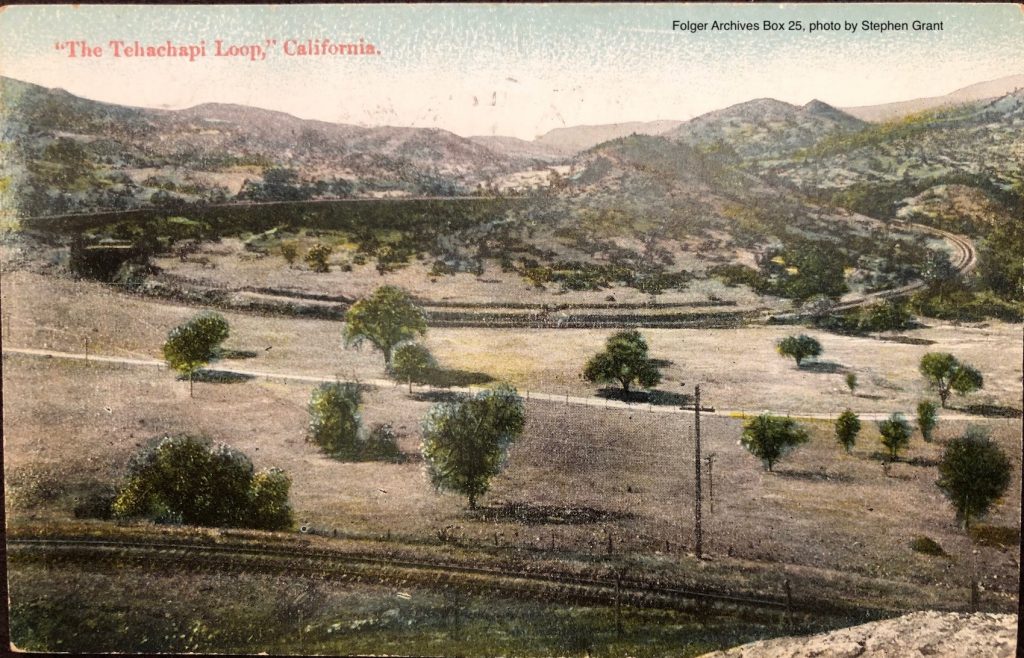
Fig. 3 “The Tehachapi Loop, California”
The Southern Pacific Railway began in 1865 with its first segment being San Francisco to San Diego. In 1876, Southern Pacific assistant chief engineer William Hood devised the ingenious method of 18 tunnels over 28 miles of track climbing down the Tehachapi Mountains to the San Joaquin Valley. One of the most difficult was the Great Tehachapi Loop. The switchback literally had the Southern Pacific train curve back on itself as it lost altitude.
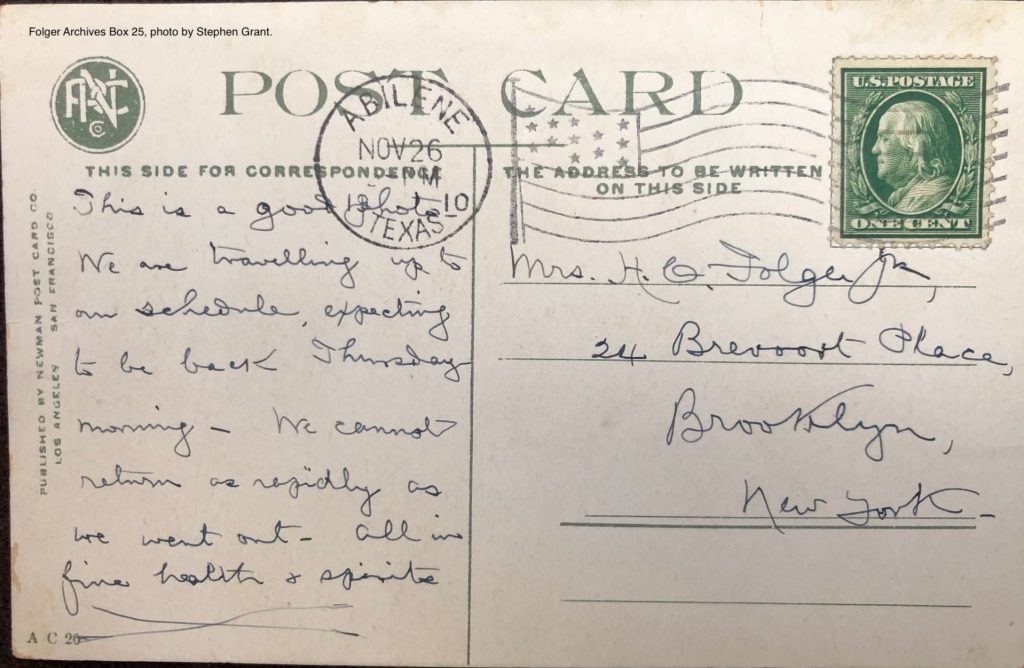
Fig. 4. Message and Address side of same postcard
The first thing I noticed was the postmark showing that the card purchased in California was mailed in Texas on Nov. 26, 1910. “This is a good photo. We are traveling up to our schedule, expecting to be back Thursday morning. We cannot return as rapidly as we went out. All in fine health and spirits.” Emily would have been relieved to receive the favorable physical and moral health report. Thirty-three words and barely room for a squiggle. Henry would not want to divulge his name, or even initials.
Having examined a series of 9 picture postcards Folger purchased and sent through the mail, now we’ll turn to two postcards that Folger felt strongly he should acquire and keep in multiple copies.
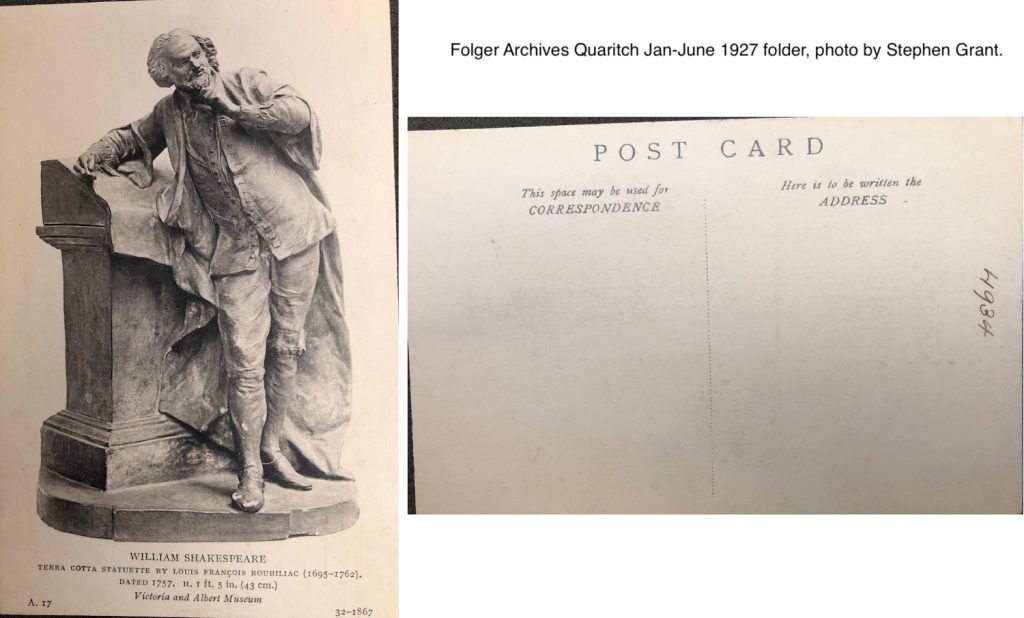
Fig. 5a (left) Postcard of terracotta Shakespeare statuette by Roubiliac
Fig. 5b (right) Back of postcard of terracotta Shakespeare statuette by Roubiliac
Louis-Francois Roubiliac (1695–1762) was born in Lyon, France, but has been described by art historians as one of the most accomplished sculptor ever to work in London. For the full-size statue in marble of Shakespeare, originally placed in the British Museum, Roubiliac made two preliminary sketch models in terracotta. The terracotta sculpture (properly called a “statuette,” since it is smaller than life-sized) depicted in this postcard is in the Victoria & Albert Museum, and was created in 1757 (the Folger has the other one). The V&A Museum catalog record says: “The poet is represented at the moment of inspiration, his left hand, with forefinger extended, raised to his face, his right arm resting on a lectern. In his right hand is a pen (part missing). . . The head was probably taken from the earliest authenticated likeness of Shakespeare, the so-called Chandos portrait, of which Roubiliac had a copy.”
Note in the lower left of the postcard the serial number (A.17) we discussed earlier as being useful. Also note on the back of the postcard the number “4934,” written in pen, possibly at the Folger. I would need explanation by a Folger staffer, but I’ve seen four-digit numbers handwritten on many documents, especially on Henry Folger’s correspondence.
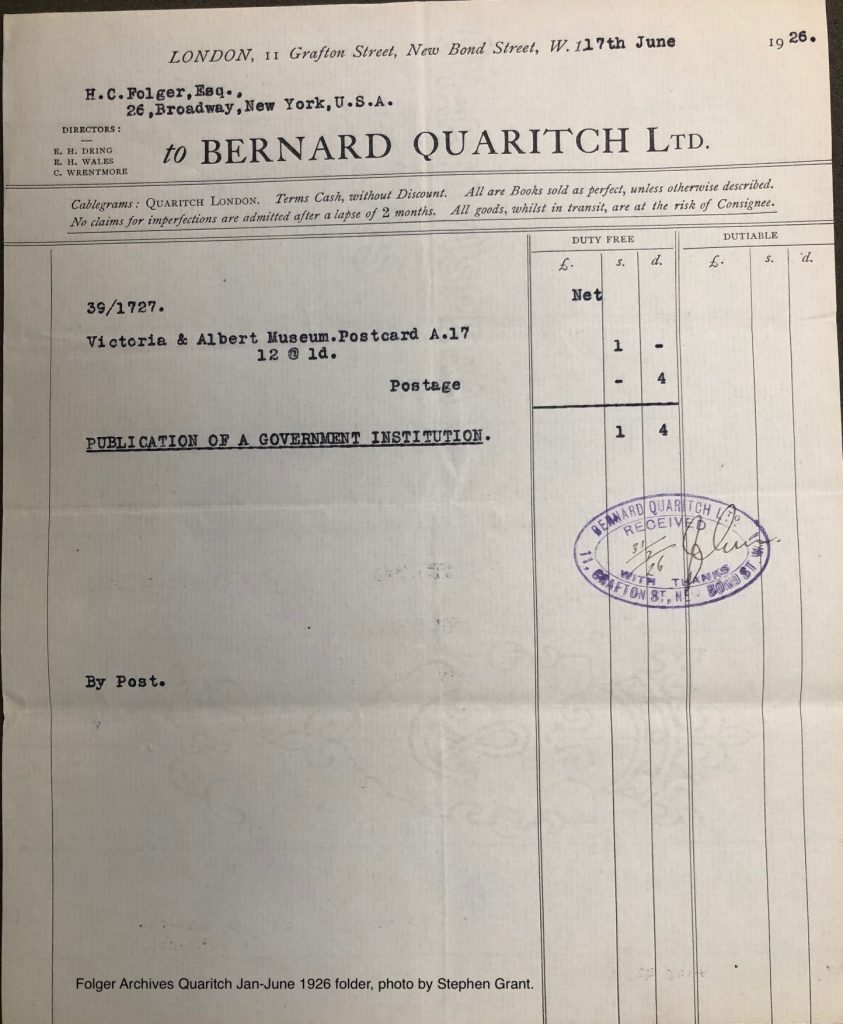
Fig. 6 Quaritch invoice noting Folger payment for 12 postcards.
On June 17, 1926, Bernard Quaritch Ltd. sends to Folger an invoice requesting payment of one shilling four pence for 12 postcards of the Roubiliac sculpture in the Victoria & Albert Museum. The bookseller’s accountant notes “with thanks” Folger’s payment received on July 31, 1927. I found one postcard of the Roubiliac sculpture in the V&A Museum in the Folger Archives Quaritch Jan-June 1926 folder that I photographed, but have no idea what Folger intended to do or did with the other 11 cards, or where they lie.
Henry Folger is enamored by Roubiliac statues of Shakespeare. From 1926 until the year of his death, 1930, he pursues and obtains (“secures” is the term he likes to employ) two such statues, the other terracotta model for the full-sized statue and the second a bust. The Rosenbach Museum & Library archives in Philadelphia contain correspondence regarding Folger’s terracotta sculpture that now resides in the Folger art vault. The statue has its own box, custom-made in 2003 when the sculpture traveled to the Louvre and the Metropolitan Museum of Art. In a Nov. 29, 1926 letter to (New York and Philadelphia) bookseller Rosenbach, Folger writes, “I have such limited information about the Roubilliac statuette to put away for future reference, now that the statuette is going into storage, it is surprising how soon one forgets details about even so important an item as this. All I have are your two telegrams and a photograph which you sent me. I want everything possible about the pedigree” (Rosenbach folder 1.63.02). Folger’s persistence in documenting fully all of his purchases leads to an immense “value added” of the Folger archives for scholars and researchers. A few years later, when a Roubiliac bust of Shakespeare is offered in a Sotheby’s sale in 1929, Folger confides to Rosenbach in a Nov. 8, 1929 letter, “I agree with you that it is desirable that we secure the bust, if we can, but I do not know on what basis to bid. May I leave that to your judgment? It is no. 54 in the Sotheby sale of Nov. 15” (Rosenbach folder 1.63.06). Henry secures the bust on Jan. 12, 1930 (Rosenbach 1930 sales cards and day book).
Folger’s deltiological interest in the marble Shakespeare statue in the British Museum (ownership transferred in 2005 to the British Library) is reflected in three-way correspondence between Folger, Rosenbach, and British bookseller Quaritch. It all starts on Jan. 18, 1927 when Henry writes his most persistent and successful bookseller, Abraham S. W. Rosenbach at his New York bookstore on 275 Madison Ave. about a marble statue of Shakespeare by Louis-François Roubiliac. Folger keeps or tries to keep impeccable records of his purchases and objects associated with them. Folger asks Rosenbach confirmation that the marble statue is indeed in the British Museum.
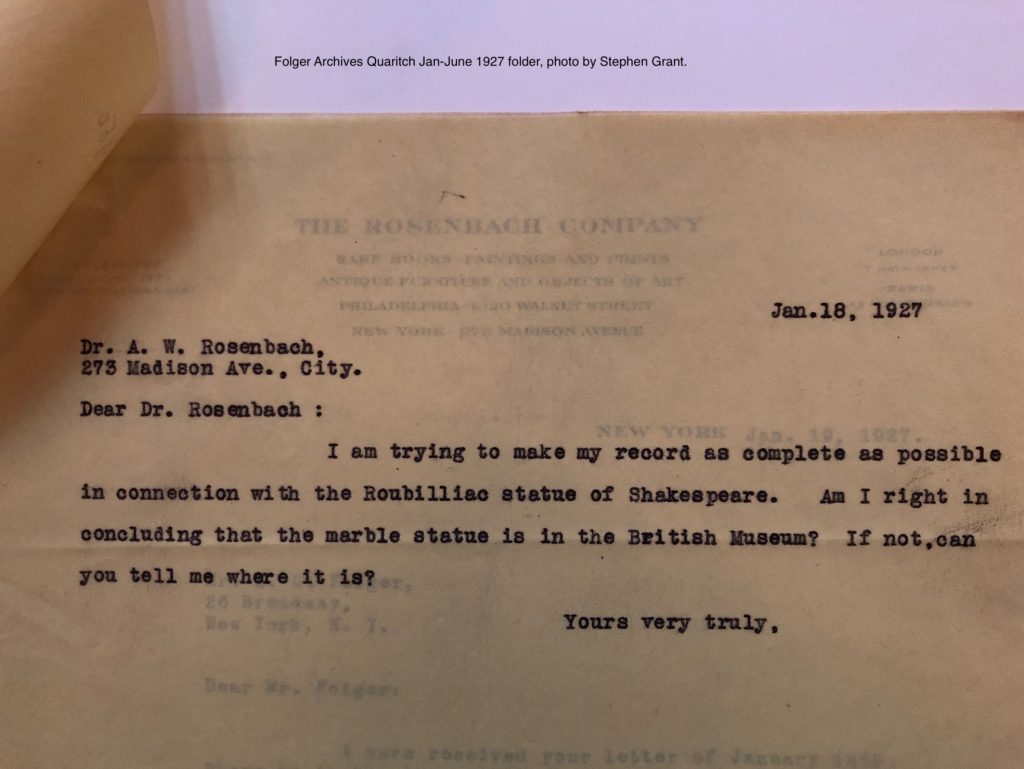
Fig. 7 Folger letter to Rosenbach regarding marble Shakespeare statue by Roubiliac.
Anyone who has spent time in the Folger Archives via the 71 gray boxes becomes familiar with light-yellow carbon copies of letters Henry Folger wrote from 26 Broadway, the seat of the Standard Oil Company on Manhattan where he worked for decades. In the early years of employment at Standard Oil, Folger may not have had a regular secretary. As a senior executive by 1910, however, Folger obtains the full-time services of a personal secretary, one Alexander Welsh until Folger’s death in 1930. Using Welsh for book correspondence was an executive perk at the time. Welsh also handled Folger’s business correspondence.
On Jan. 19, 1927, Dr. Rosenbach—as Folger addresses him—responds with both erudition and cunning. Rosy—as friends referred to him—responds with precision where in the British Museum the statue is. He relates the provenance of the statue as having come from playwright and actor David Garrick. In the second paragraph Rosy butters up “H. C.” (as many people call Folger) big time implying Folger should not preoccupy himself with the marble copy. Rosenbach has sold Folger the much more significant “terre cuite” original from which the marble copy was made, and perhaps not entirely by Roubiliac. Rosy uses the French terre cuite rather than the more often employed (on the postcard, for example) Italian terracotta.
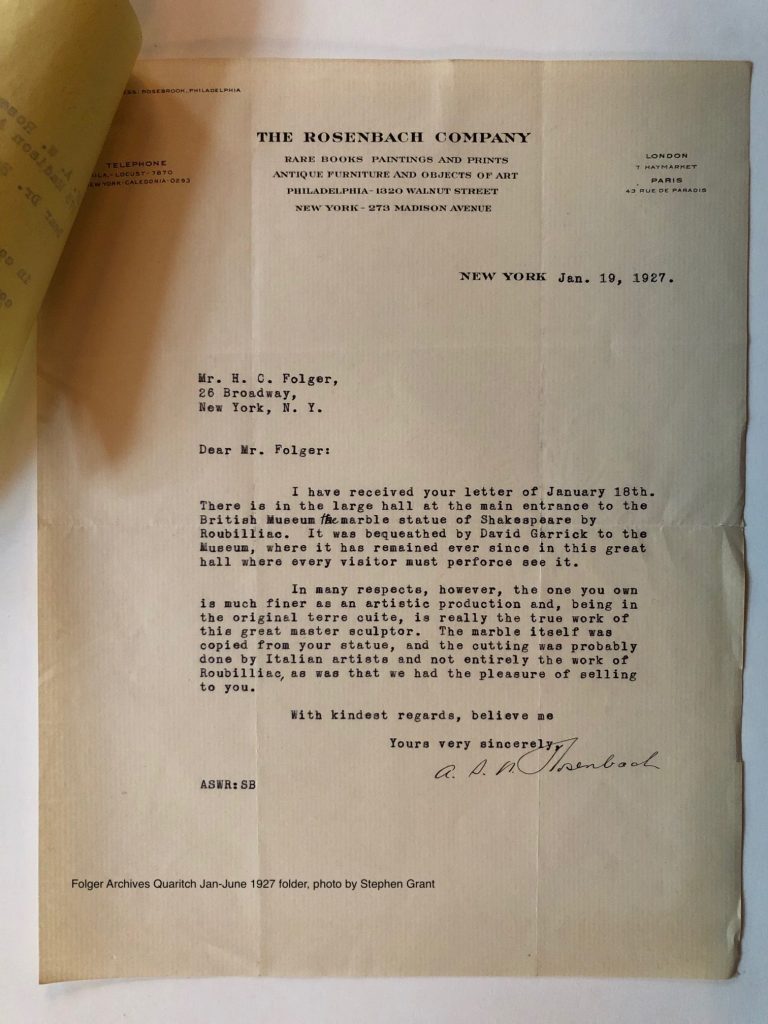
Fig. 8 Rosenbach letter to Folger regarding two Shakespeare statues by Roubiliac.
Armed with Rosy’s impressive intel, H. C. shoots off a letter to his favorite British bookseller, Bernard Quaritch at 11 Grafton St., New Bond St. W., giving the precise location of the statue (he had learned only the day before) in the British Museum.
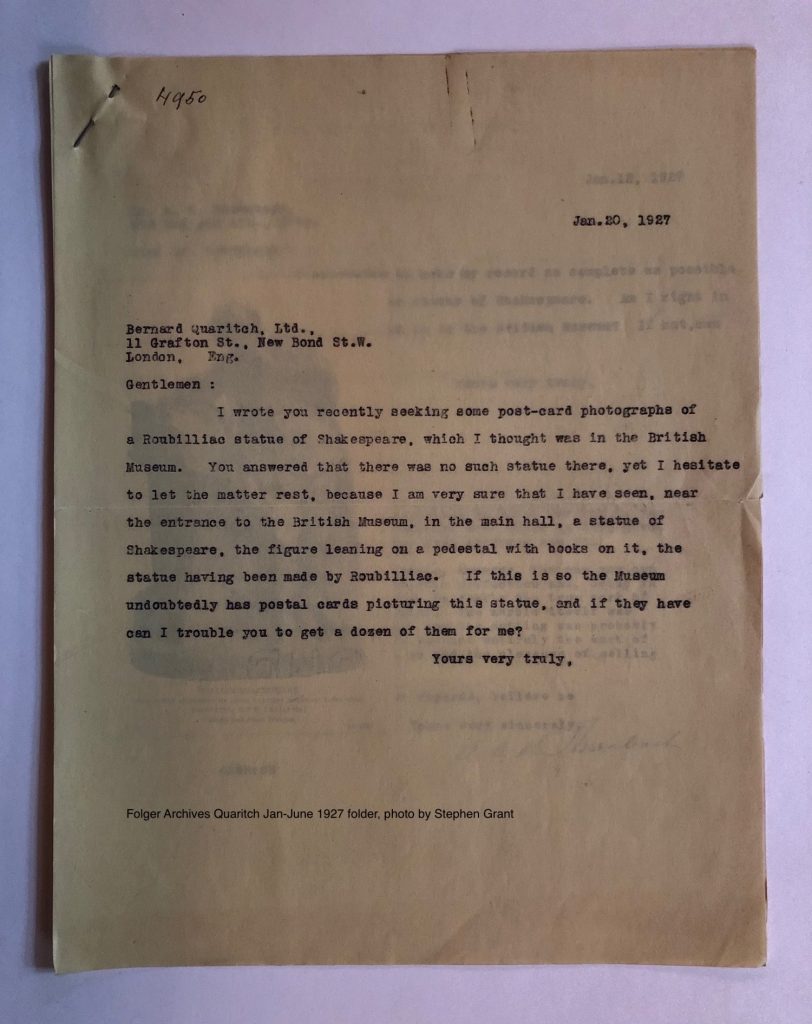
Fig. 9 Folger letter to Quaritch about postcards of marble Shakespeare statue by Roubiliac.
On Jan. 20, Folger is still hot on a trail. What is he after? Why, nothing other than postcards of the Roubiliac marble statue! He wants another dozen, the amount he had secured from Quaritch of the terracotta sculpture at the V&A Museum. Here is what this invoice from Quaritch looks like.
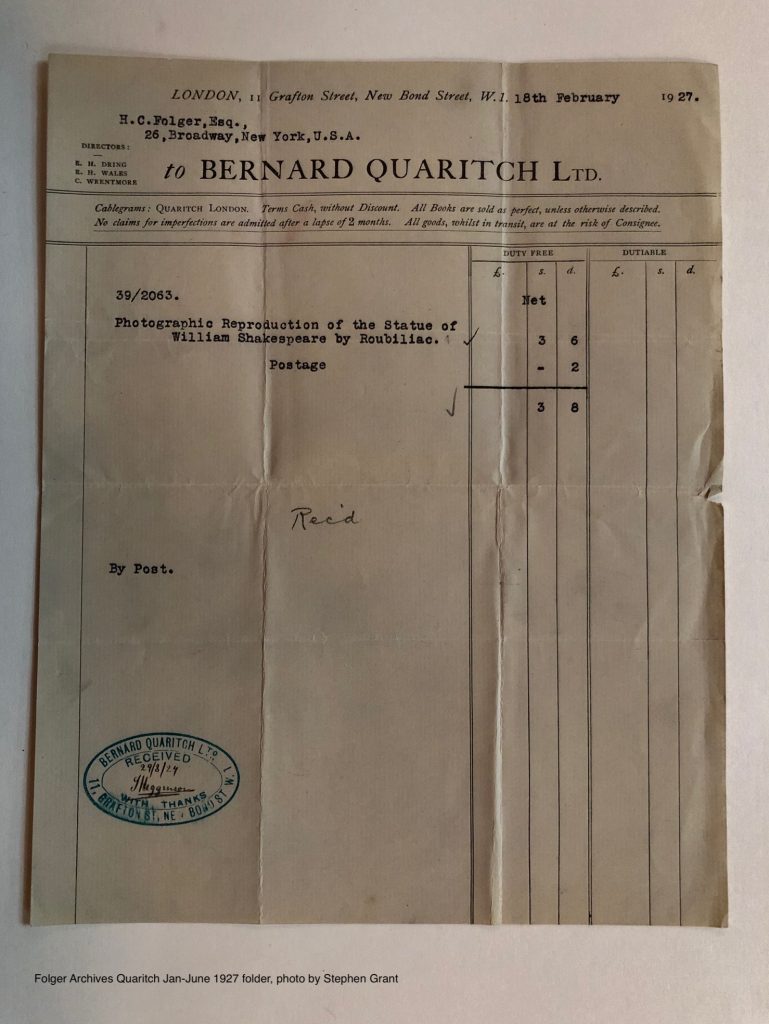
Fig. 10 Invoice from Quaritch to Folger for 12 postcards of marble Shakespeare statue.
On Feb. 18, 1927, Quaritch sends Henry Folger, Esq., 26, Broadway, New York, U.S.A. an invoice amounting to 3 shillings, 8 pence for an undetermined number (presumably 12 at 3 shillings per) postcards (postcards and postage duty free), called here “photographic reproduction.” In the lower left of the invoice the accountant Higginson has stamped the invoice as paid by Folger on Mar. 29, 1927.
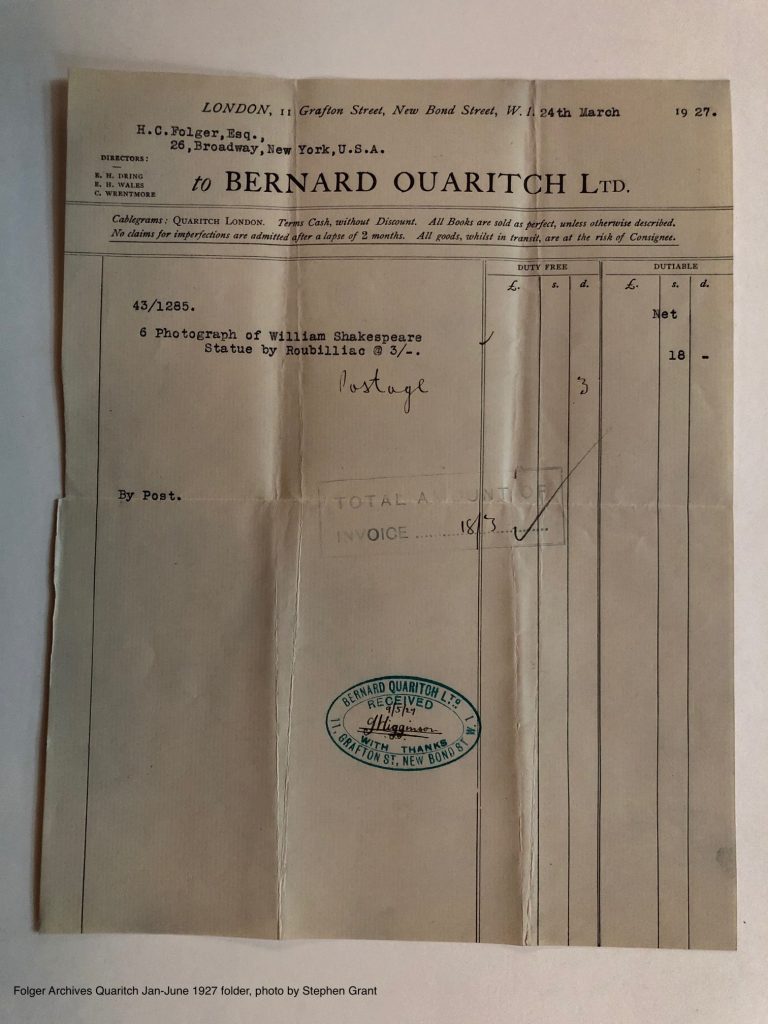
Fig. 11 Invoice from Quaritch to Folger for six more postcards of Shakespeare statue by Roubiliac.
On Mar. 24, 1927, Quaritch sends an invoice to Folger, who in the meantime has requested six additional postcards. The invoiced postcards of the marble Shakespeare statue are marked as dutiable at 3 shillings per plus postage (duty free) of 3 shillings for a total of 18 shillings, 3 pence. Accountant Higginson has stamped the invoice as paid by Folger on May 9, 1927.
Something doesn’t look just right, so let’s compare these last two invoices. Quaritch invoices postage of 2 shillings for 12 postcards and 3 shillings for 6 postcards. What sense does that make? In the Feb. 18 invoice the postcards are marked duty free; in the Mar. 24 invoice they are marked dutiable. What’s going on in the Quaritch accounting department, anyway? Does Folger notice? Are these peanuts too small to cavil about?
Collectors often have a limits issue. Where do they stop? They can’t collect everything. Why are 12 or 18 postcards of a Shakespeare statue by Roubiliac the number Folger thinks he needs in the 1920s? On the other hand, we could applaud Henry for having demonstrated restraint. Remember how reckless he was in 1879? He was able to finish college only because of a generous loan from the Charles Pratt family. In early July before he has started any work for a living, he splurges ten dollars on 800 copies of the program to hear him declaim and walk away with the Hyde oratory contest?
Determined readers, I have to show you one more letter before we leave Roubiliac.
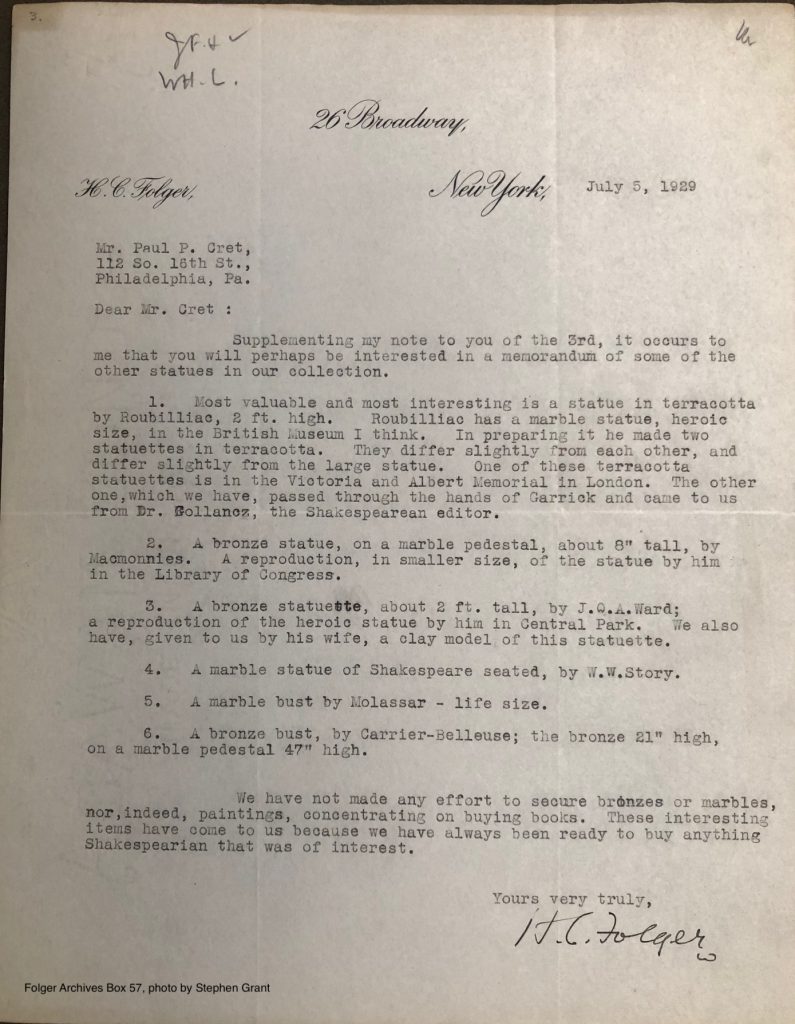
Fig. 12 Letter from Folger to principal architect Cret on Roubiliac sculpture.
What a rich letter from Folger to principal architect of the Folger Shakespeare Library, Paul Philippe Cret, on July 5, 1929! Folger retired from Standard Oil in 1928 to devote himself full time to the design and furnishing of the library, and more book buying, of course. Although retired, after 49 years (!) of loyal service to the firm he was given a comfortable executive office at 26 Broadway, where he could be found most Thursdays and Fridays. It is not surprising to read that Folger had written Cret a note only two days earlier. In paragraph no. 1, Folger proudly labels his Roubiliac statue as “most valuable and most interesting.” He adds the name of Gollancz, the Shakespeare editor that Rosenbach omitted mentioned in his letter in Fig. 8. Don’t neglect reading the last paragraph, where Folger declares the relative importance or bronzes, marbles, and paintings as opposed to books in the Shakespeare collection.
Folger did not sign this letter. The “w” under the “r” in Folger signifies that Alexander Welsh, Folger’s personal secretary, signed for his chief. Cret sent the important letter to his two principal associates, John Harbison (JFH) and William Livingstone (WHL), as indicated in the upper left corner of the letter. Whenever Cret and Folger met to discuss the library project, Harbeson accompanied the principal architect. The reason is most interesting. Harbeson later explained: “As Paul Cret has lost much of his hearing in his five years in World War I, and that loss had kept him from losing a strong French accent, I was taken along to the meetings to see that Mr. Folger understood what Cret said and Cret heard Mr. Folger’s ideas” (Folger Archives Box 57).
(This post was originally published on the Folger Shakespeare Library’s research blog The Collation on November 14, 2019.)
COMMENTS:
1 Comment
Submit a Comment
CONNECT

This is my favorite post, yet. I love the way you guide us through this hunt and this story. And what remarkable letters! I had never heard of this French sculptor before. That is certainly the art history nerd in me… And I am now down the rabbit hole of researching Roubilliac! My favorite is the letter then to Cret. Henry was so urgent, so persistent, and had wonderful taste, did he not?